Long admired in the British Isles for their chubby racemes of bright flowers appearing in late winter to early spring, flowering currants (
Ribes sanguineum) are now gaining the appreciation they deserve in West Coast gardens.
Flowering currants are popular native plants in the Pacific Northwest, not only because of their cheery, early blossoms, but because they are so valuable to wildlife. Migrating hummingbirds follow them northward up the coast as they bloom, and bees and other pollinating insects find the flowers similarly irresistible. In fall, powdery blue-black berries offer sustenance to foraging animals. Find the small green berries on the plants starting in June, and watch as they fatten in size and turn powdery blue over the course of the summer. By fall, as they turn black, they will be devoured by foraging birds and mammals.
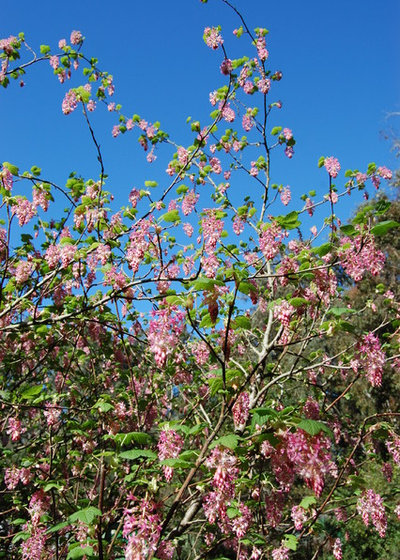
Far Out Flora
Botanical name: Ribes sanguineumCommon names: Flowering currant, winter currant, red- or pink-flowering currant
Origin: Western coastal North America from central British Columbia south to central California;
R.sanguineum var.
sanguineum is native from the northern coast of California to central British Columbia and is the variety responsible for most cultivars found in the Pacific Northwest
Where it will grow: Hardy to -10 degrees Fahrenheit (USDA zones 6 to 9; find your zone)
Water requirement: Thrives in a mild, coastal Mediterranean (dry-summer and wet-winter) climate; once it’s established, little to no supplemental summer water is required except in extra hot, sunny areas; less supplemental water is required in shade, more in sun
Light requirement: Shade to sun; flowering is more prolific in sun
Mature size: 6 to 12 feet tall and wide, depending on the cultivar
Benefits and tolerances: The blossoms provide insect nectar and pollen; produces fruit in late summer to fall
Seasonal interest: Chubby racemes of white, pink, bicolor pink and white, or pinkish-red flowers in March and April; the late-summer berries are powdery blue-black; the fall color is buttery yellow
When to plant: Fall to spring is ideal
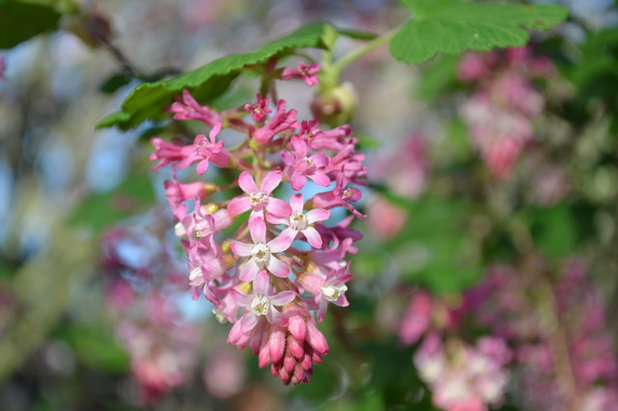
Girasole Sonoma
Distinguishing traits. Flowering currant blooms are composed of myriad tubular flowers arranged in drooping racemes and are sought after by hummingbirds and bees.
Ribes sanguineum foliage has a deliciously resinous scent (some love it; some find it a bit pungent), and the foliage is a low priority for deer. It’s a fantastic addition to the late-winter garden, blooming as early as February in the southern part of its range and in March to April farther north.
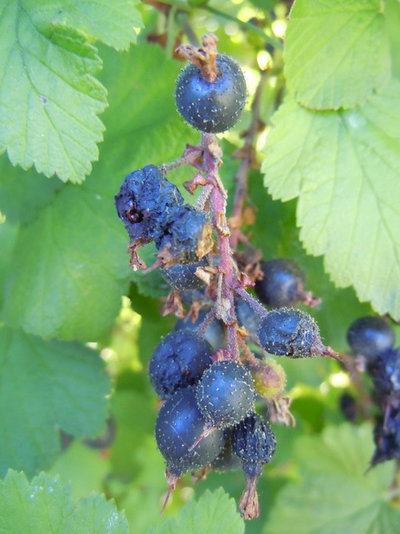
Flowering currant berries are important forage for wildlife in the Pacific Northwest. The clusters of blackish-blue berries are ornamental, if you can catch sight of them before they are devoured.
Photo by Wikimedia Commons user Patrice78500
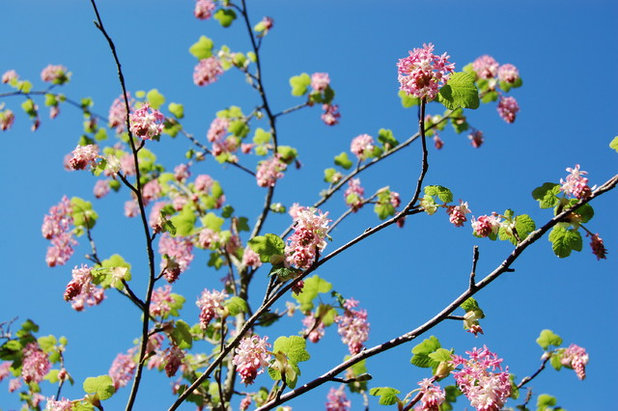
Far Out Flora
How to use it. Flowering currant is terrific for tough, dry, partial-shade areas, although it still needs winter moisture to grow properly. Plant it in a shady parking strip, massed in shrubberies or informal hedges, in native gardens and in difficult, partial-shade, back-of-the-border areas. That said, don’t hesitate to plant it in a featured spot in the garden or near your house — as long as you appreciate the sweet resinous scent of the foliage.
Planting notes. Ideally, plant flowering currant in autumn, so it can establish a strong root system over the winter. As with any drought-tolerant plant, avoid the no-win situation of planting directly beneath large, mature conifers, where little to no rainwater penetrates. Flowering current is ideal in partial shade, requires decent drainage and thrives where summer water is scarce.
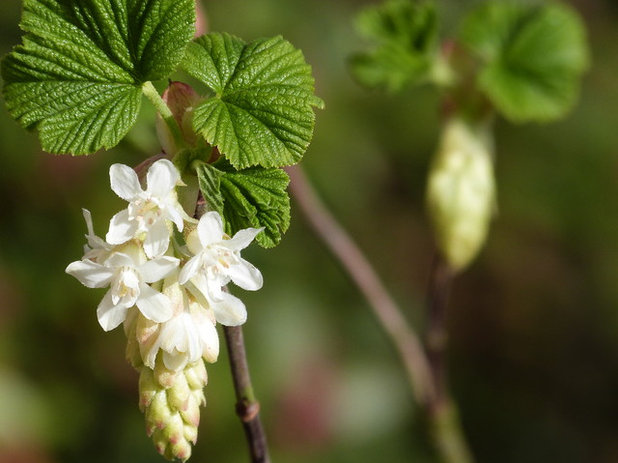
Landscapes & Cie
Selected cultivars include:
- R. sanguineum ‘White Icicle’ (shown): white flowers on fat racemes; fast growth to 6 feet
- ‘Pokey’s Pink’: candy-pink flowers aging to pale pink for a bicolor effect; grows to 6 to 8 feet
- ‘King Edward VII’: vivid red flowers; upright growth habit; grows to 8-plus feet
- ‘Pulborough Scarlet’: vibrant, hot-pink flowers; floriferous and vigorous plant; grows to 8-plus feet
- ‘Brocklebankii’: golden spring foliage turning chartreuse in summer; pink flowers; slightly smaller stature; slower growing, to 5 feet. Golden foliage is prone to burning, so it grows best in morning sun or partial shade.
‘White Icicle’, shown here, is a heavy bloomer with green buds opening to parchment white over a period of a month or more. Contrary to popular belief, the white flowers are just as valued by hummingbirds as the red ones.





